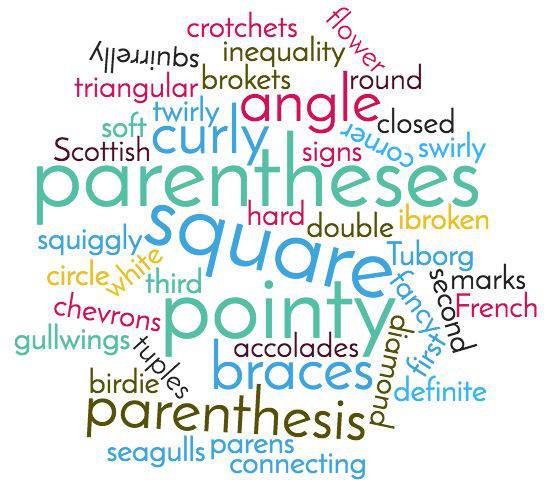 We often sail through life blissfully unaware of our little foibles – one of mine being the way I always pronounce all the letters in the words ‘tortoise’ or ‘porpoise’. It didn’t occur to me that other people pronounced the words as ‘tortus’ or ‘porpus’, until my husband said one day, “I love the way you pronounce things”. I was confused. It turns out there are many words I have been saying that he ‘loves’ – in other words – ‘wrong’ my whole life. But then, I’m Scottish and my husband’s Australian, so who are you going to believe?
We often sail through life blissfully unaware of our little foibles – one of mine being the way I always pronounce all the letters in the words ‘tortoise’ or ‘porpoise’. It didn’t occur to me that other people pronounced the words as ‘tortus’ or ‘porpus’, until my husband said one day, “I love the way you pronounce things”. I was confused. It turns out there are many words I have been saying that he ‘loves’ – in other words – ‘wrong’ my whole life. But then, I’m Scottish and my husband’s Australian, so who are you going to believe?- ( ) – parentheses, round brackets (UK, Canada, New Zealand, and Australia), parens, soft brackets, first brackets or circle brackets
- [ ] – square brackets, closed brackets, hard brackets, second brackets, crotchets, or (in the US) brackets
- { } – braces are two connecting marks used in printing and in music to connect staves to be performed at the same time (UK and US), flower brackets (India), French brackets, curly brackets, definite brackets, swirly brackets, curly braces, birdie brackets, Scottish brackets, squirrelly brackets, gullwings, seagulls, squiggly brackets, twirly brackets, Tuborg brackets (DK), accolades (NL), pointy brackets, third brackets, or fancy brackets
- 〈 〉– pointy brackets, angle brackets, triangular brackets, diamond brackets, tuples, or chevrons
- < > – inequality signs, pointy brackets, or brackets. Sometimes referred to as angle brackets, in such cases as HTML markup. Occasionally known as broken brackets or brokets
- ⸤ ⸥; 「 」 – corner brackets
- ⟦ ⟧ – double square brackets, white square brackets
A parenthesis of an entire sentence can be inserted within another sentence, but leave out the full stop after the parenthesised sentence. (However, an exclamation point or question mark is acceptable!) to avoid confusion.
(A complete sentence may also follow the punctuation of the preceding sentence; in that case, include a full stop—or another punctuation mark before the close parenthesis.) An incomplete sentence within parentheses is not punctuated with a full stop, but, again, an exclamation point or question mark is allowed.
When providing an explanation or an example, the additional information can be enclosed in parentheses. The following sentence shows how a parenthesis of a parenthesis should be formatted. (The abbreviations e.g. [“for example”] and i.e. [that is”] generally precede such information in formal and scholarly prose; in more casual contexts, the phrases are employed.) This is general American English style; British English style (and legal style and style for some other contexts) is parentheses within parentheses.
Parentheses enclose the abbreviation of an acronym or initialism after the spelled-out name of an agency, company, or organisation to inform the reader about how the entity will be identified on subsequent references: “The Royal Society for the Protection of Birds (RSPB) was …” (Note that ‘The” is not repeated in the parenthesis, but it should precede the initialism when it appears again as follows, “The RSPB was…”)
Parentheses are used to enclose a note when a reader is directed to a cross-reference or when a writer glosses (presents a brief definition of) a term, provides a citation for a quotation or a fact or figure, points out that he or she has used italics to emphasise part of a quoted passage, or otherwise annotates a quotation.
Back-to-back parenthesis is acceptable, but it’s always easier in terms of readability to rework the structure of the sentence so you only need one set. Readability should be the main aim of all your written communications.
Brackets (or square brackets)
OK, so the simplest way to explain ‘brackets’ is “use square brackets when you want to use parentheses WITHIN existing parentheses.” Make sense? I have rarely used brackets within parentheses because the text can start to look meandering and clunky, but it is perfectly acceptable to use brackets in this way. If I am using them I tend to find I use them most in editorial features and interviews particularly when you want to add comments, corrections, explanations, notes, or translations that are not part of the original copy.
Another good way to remember how to use brackets is to use them to CLARIFY what is being said.
To summarise:
- Use brackets to explain or clarify text.
- Use square brackets in quotes to show the words inside them are not part of the original text or statement. Professor Humbug said, “His CHF [congestive heart failure] needed urgent action.”
- Square brackets are also used to show parentheses within parenthesis. When using two parentheses together ensure you leave a space between the two closing parentheses (that is, leave a space between two closing parentheses [like this] ).
- Use parentheses to enclose expressions that are not necessary to the meaning of the sentence (e.g, an aside).
The secret (if there is one) lies in understanding the underlying psychology of the individual. If you are placing a complete sentence within parentheses ensure you place the full stop inside before the closing mark.
If you would like more information on the differences mentioned here or you would like help compiling a Style Guide for your organisation, please send us an email at info@eviemcrae.com or contact us on our Facebook page with your question.
 Send to Kindle
Send to Kindle

